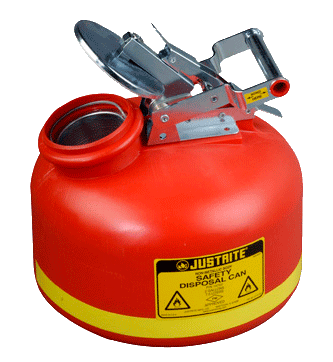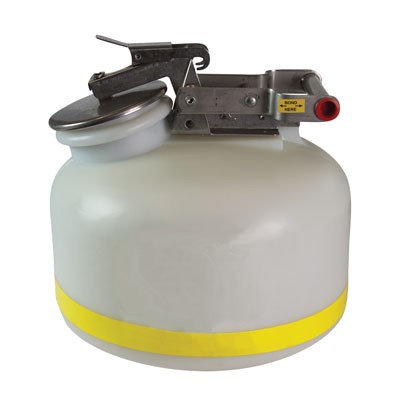Just How Liquid Garbage Disposal Functions: A Detailed Overview of Techniques and Technologies Utilized

Overview of Fluid Waste Kind
The complexity of liquid waste types necessitates an extensive understanding of their attributes and implications for disposal. Fluid waste can extensively be classified right into numerous types, consisting of commercial, community, agricultural, and contaminated materials. Each category shows distinctive residential or commercial properties, requiring specific monitoring approaches to alleviate environmental and health risks.
Industrial fluid waste originates from manufacturing procedures and commonly consists of a variety of contaminants, such as hefty metals, solvents, and organic substances. Community fluid waste, primarily making up wastewater from families and industrial establishments, includes raw material, nutrients, and virus (industrial wastewater treatment). Agricultural liquid waste, consisting of overflow from farms, might contain plant foods, pesticides, and pet waste, posturing risks to water quality and ecosystems
Hazardous fluid waste is defined by its poisoning, sensitivity, or potential to create harm. This group includes materials like acids, bases, and certain chemicals that require stringent handling and disposal procedures. Understanding these varied fluid waste types is crucial for establishing reliable disposal methods and making certain compliance with ecological regulations. Appropriate category and characterization are important for applying appropriate therapy strategies and reducing the negative effect on public health and wellness and the setting.
Physical Treatment Methods

Screening is the initial action, where bigger particles and particles are gotten rid of from the liquid waste making use of displays or grates. In sedimentation storage tanks, heavier fragments work out at the bottom, creating a sludge layer, while the cleared up liquid can be additional treated.
Purification is one more necessary technique that entails passing the fluid through permeable materials, such as sand or membrane layers, to catch smaller bits. This step improves the quality of the fluid, making it suitable for succeeding treatment procedures.

Chemical Treatment Techniques
Chemical therapy strategies are vital for efficiently handling fluid waste, specifically in dealing with dissolved and colloidal impurities that physical methods might not go to my blog properly get rid of. These techniques utilize various chemical representatives to neutralize, precipitate, or change hazardous compounds right into less dangerous forms.
One typical approach is coagulation and flocculation, where chemicals such as alum or ferric chloride are added to promote the gathering of put on hold particles. This process boosts sedimentation, permitting simpler elimination of the resulting sludge. In addition, oxidation processes, utilizing representatives like chlorine or ozone, are used to damage down complex organic compounds and virus, providing the waste safer for discharge or further treatment.
Neutralization is one more essential technique, which changes the pH of acidic or alkaline waste streams to neutral degrees, protecting against potential damage to downstream systems and the atmosphere. In addition, progressed oxidation procedures (AOPs) utilize combinations of oxidants and important source ultraviolet light to weaken consistent contaminants, attaining a greater degree of therapy performance.
Organic Therapy Procedures
Organic therapy processes play a critical duty in the monitoring of fluid waste by making use of microbes to decay natural issue and lower impurity degrees. These procedures can be extensively categorized into aerobic and anaerobic therapies, each using certain microbial neighborhoods to accomplish effective waste degradation.
Cardio therapy involves the usage of oxygen to assist in the failure of organic products by microorganisms. This process is generally carried out in triggered sludge systems, where aeration tanks provide a helpful atmosphere for microbial growth, leading to the oxidation of natural contaminants. The resultant biomass can be separated from dealt with effluent with sedimentation.
In contrast, anaerobic therapy happens in the absence of oxygen, counting on various bacteria to damage down raw material. This technique is particularly useful for high-strength waste, as it produces biogas, a renewable resource source, while lowering sludge production. Technologies such as anaerobic digesters are frequently utilized in industrial and metropolitan applications.
Both anaerobic and cardio biological therapies not only reduce the environmental effect of liquid waste but likewise assist in source healing, making them important elements of lasting waste monitoring methods. Their performance, effectiveness, and versatility sustain their prevalent application across various industries.
Arising Technologies in Disposal
Cutting-edge methods to liquid garbage disposal are rapidly evolving, driven by developments in innovation and a boosting emphasis on sustainability. Amongst these emerging innovations, membrane bioreactors (MBRs) have actually gained grip for their capability to combine organic therapy with membrane layer filtering, causing high-grade effluent that can be recycled in various applications. MBRs allow smaller impacts and extra reliable procedures contrasted to typical systems.
Another promising development is using anaerobic digestion combined with nutrient healing technologies, which not just deals with fluid waste however also produces check here biogas and recoups beneficial nutrients like nitrogen and phosphorus. This dual advantage improves source efficiency and lowers environmental influence.
In addition, advanced oxidation procedures (AOPs) are being adopted for the degradation of intricate organic toxins. These techniques use effective oxidants and stimulants to break down contaminants at the molecular level, using an extremely effective option for difficult waste streams.
Additionally, the combination of synthetic intelligence and machine knowing in waste management systems is maximizing functional efficiency and predictive maintenance, leading to minimized expenses and enhanced ecological compliance. These innovations show a considerable shift in the direction of more efficient and lasting liquid garbage disposal methods.
Conclusion
In verdict, efficient liquid waste disposal requires a detailed understanding of numerous strategies and technologies. By continuously advancing these approaches, it ends up being possible to attend to the expanding obstacles associated with fluid waste, ultimately adding to ecological protection and resource recuperation.
Liquid waste disposal is an essential facet of environmental management, calling for a thorough understanding of numerous methods and technologies tailored to various waste kinds. Liquid waste can extensively be classified right into a number of types, consisting of commercial, community, farming, and harmful waste. Agricultural liquid waste, consisting of overflow from farms, might have fertilizers, pesticides, and pet waste, presenting dangers to water top quality and environments.
Numerous physical therapy methods play an important function in handling fluid waste efficiently - industrial wastewater treatment.In verdict, efficient fluid waste disposal necessitates an extensive understanding of different methods and technologies